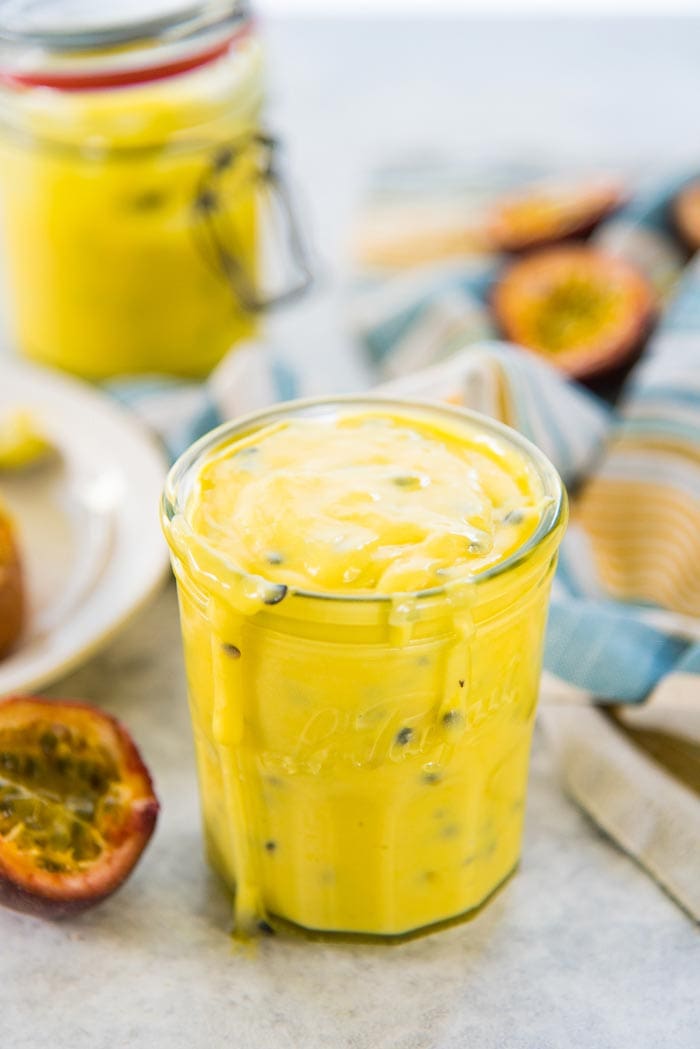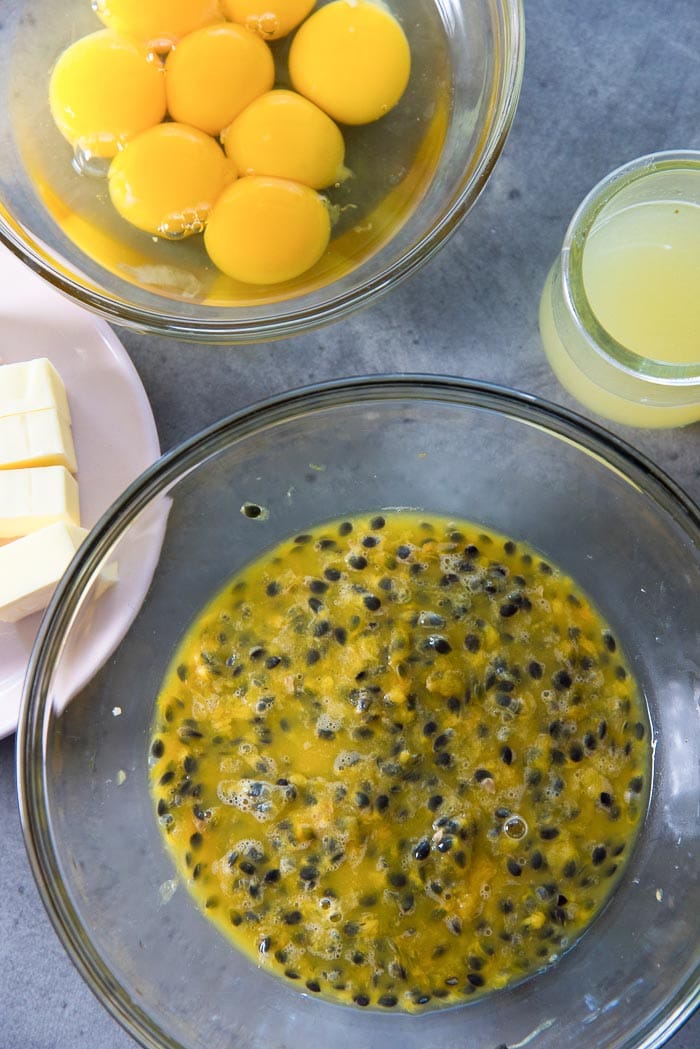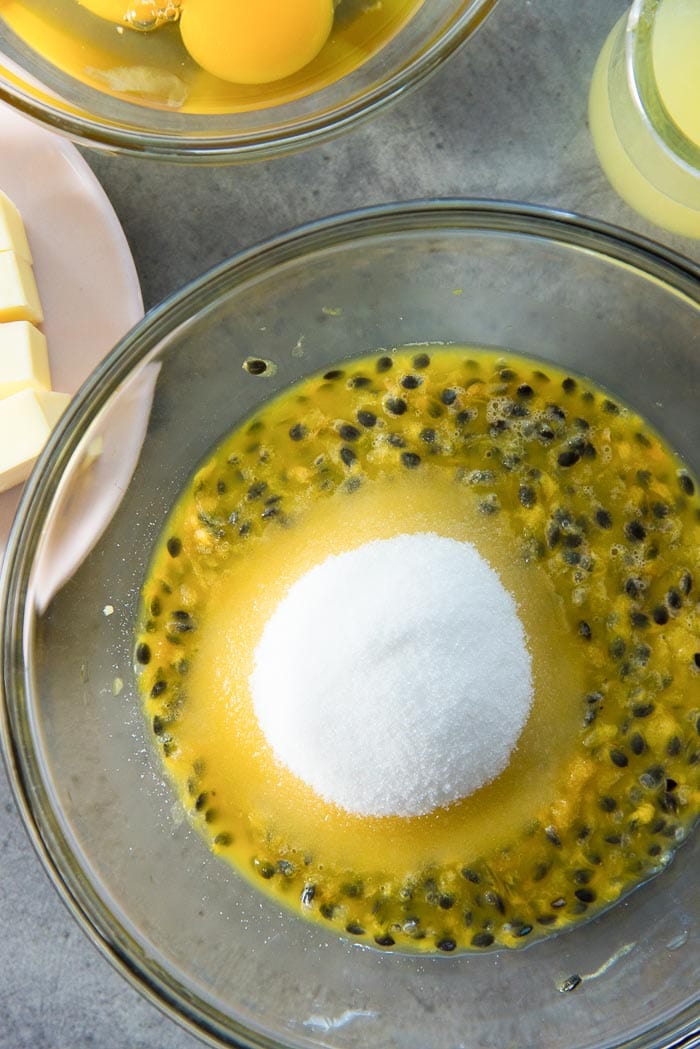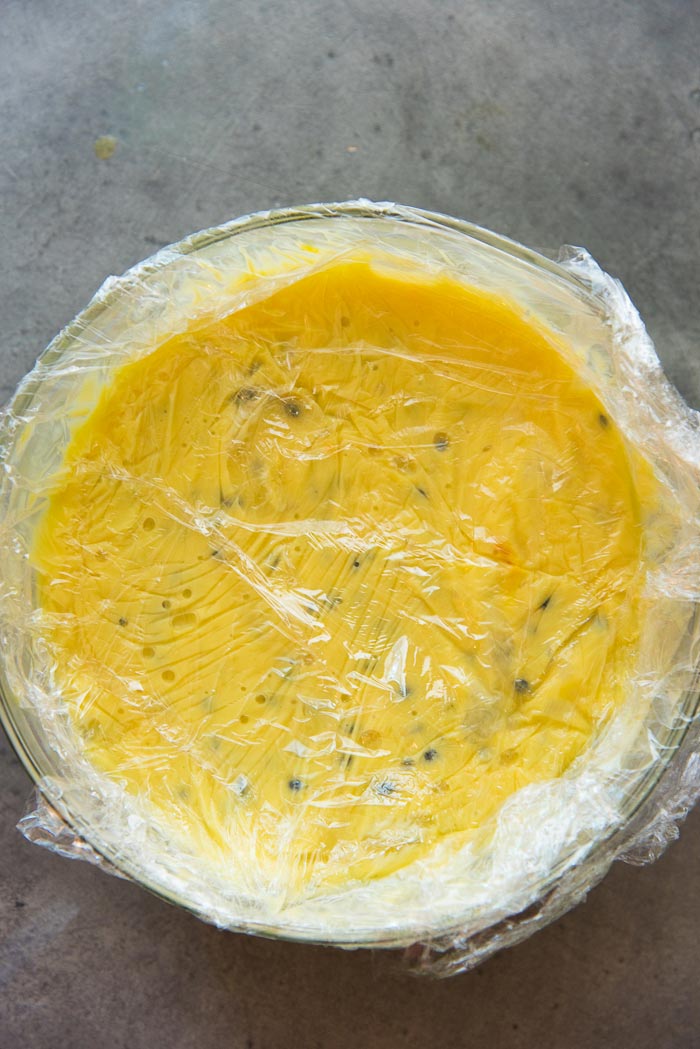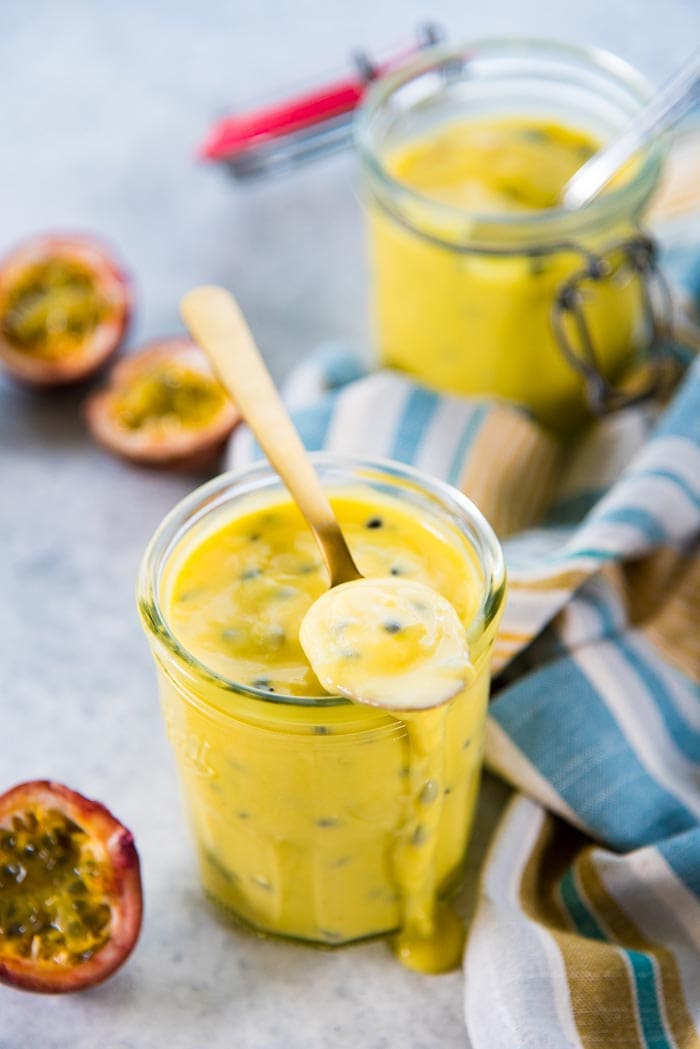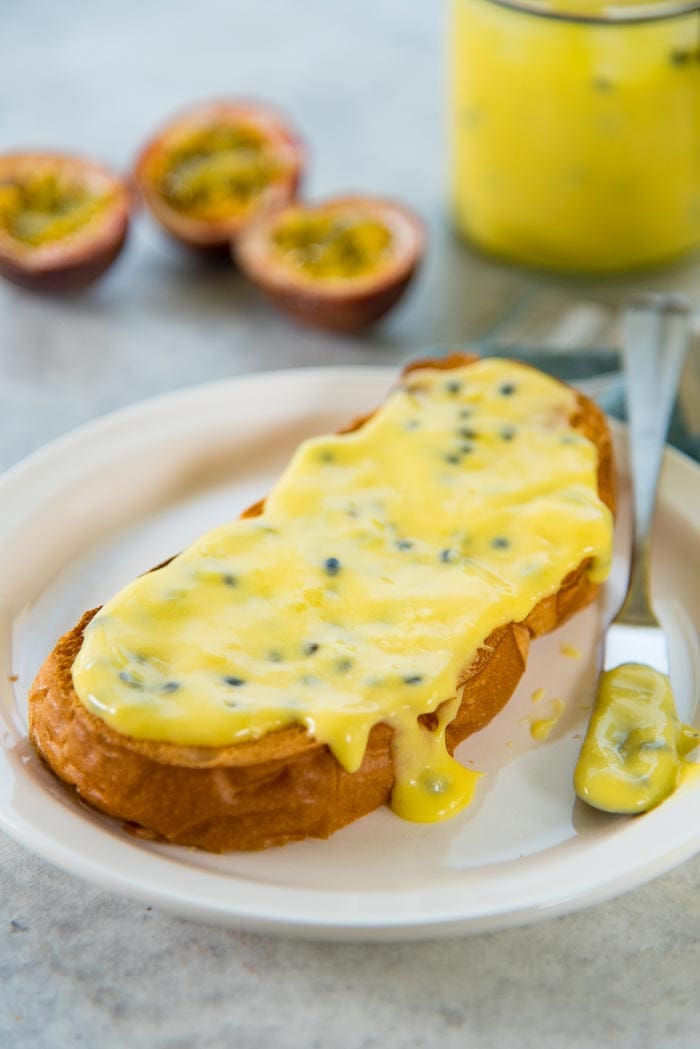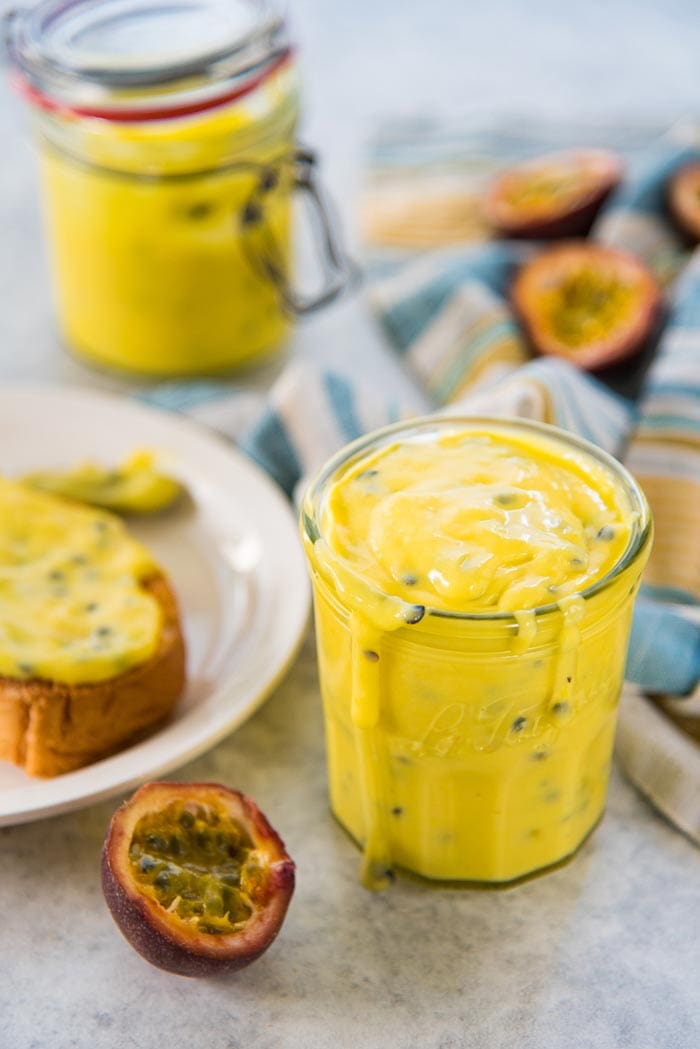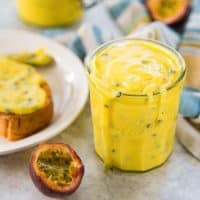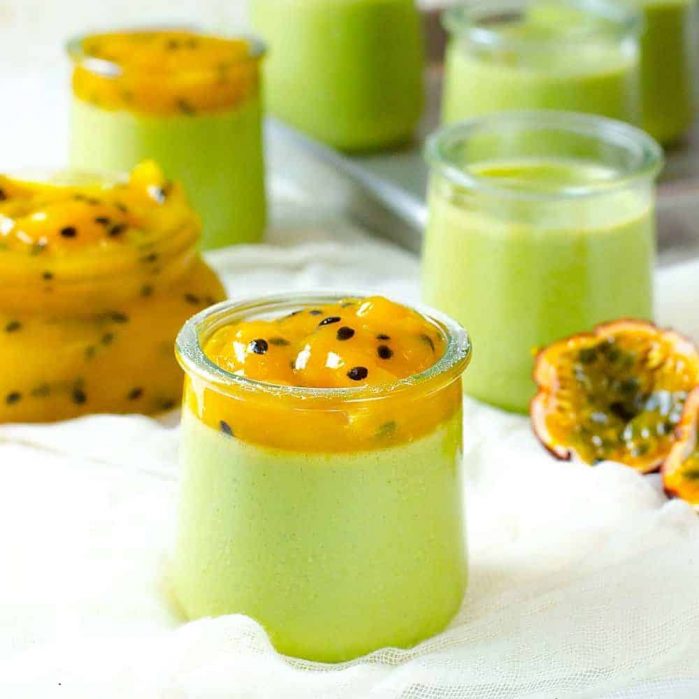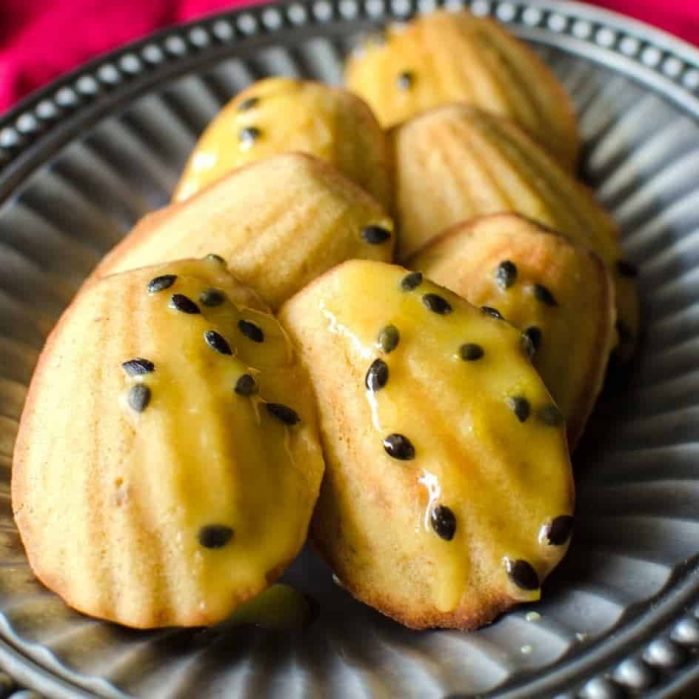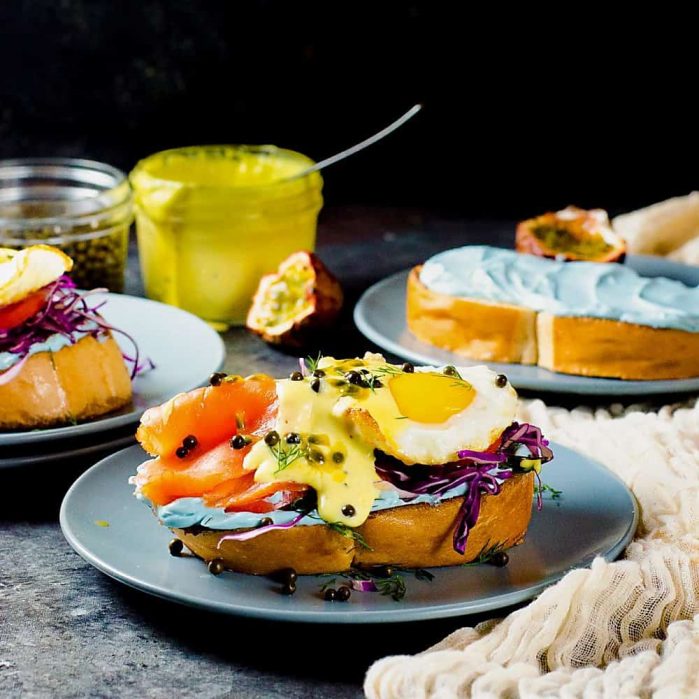This passion fruit curd recipe is amazingly versatile and can be used to as a filling or topping for a variety of desserts, like the best pavlova ever! I absolutely adore passion fruit, and I’ve shared a few recipes before on the blog before, like this matcha panna cotta with passion fruit mango compote, and this brown butter madeleines with passion fruit glaze and also this delicious passion fruit hollandaise sauce! Living in Missouri, it’s not a fruit that I come by often these days unfortunately, and even when I do fine them, they are ridiculously expensive. So I usually buy enough to preserve them for later use. There are TWO main ways that I use to preserve this gorgeous fruit. One is to make passion fruit syrup that I can freeze for later. I love making fruit syrups, and my summers are usually spent making a variety of them like this delicious rhubarb syrup, lychee syrup, grilled pineapple syrup, the best lemon syrup, vanilla blood orange syrup, peach shrub syrup, strawberry shrub syrup etc.! OR my second favorite way is to make passion fruit curd (which is also sometimes referred to as passion fruit butter). Both of these can be frozen for later, which makes them ideal ways to preserve passion fruit.
What is passion fruit curd?
Passion fruit curd is basically a type of fruit preservative made with passion fruit, lemon, sugar and butter, and thickened with eggs and/or egg yolks. If you like homemade lemon curd, then you’ll LOVE passion fruit curd. It’s basically a passion fruit custard that’s packed with tropical citrus flavor, and delightfully creamy and buttery! I put it on pretty much everything! 🙂 Whatever you put lemon curd on, will be even better with this passion fruit curd (passion fruit butter). With the added floral, tropical flavor of passion fruit, it really enhances the flavor profile of anything that you pair it with. And may I also suggest delicious pineapple curd and kiwi curd? Just as amazing as a topping or a filling for a variety of desserts.
How to make passion fruit curd
Usually, when you make lemon curd, there’s room for small mistakes. If the curd starts to lump up, you can rescue it by passing the curd through a sieve. But with passion fruit curd, it’s harder to pass it through a sieve because of the seeds, so you have to be more careful to not let any lumps form. So you will need to cook the passion fruit curd over low heat, very slowly. But the good news is that there’s a way for even complete novices to make this passion fruit curd perfectly!
Two methods to make this passion fruit curd recipe
Method 1 – Direct heat cooking on the stove. This is for more confident and experienced cooks. If you’re confident with your custard making skills (with cornflour/cornstarch), or lemon curd making skills, then follow this method. This way is quicker, but requires you to stay near the stove, stirring the curd the whole time. The direct heat can cause lumps to form easily (because the eggs are scrambling), so it’s important to keep the curd moving and stirring constantly to prevent that from happening. Method 2 – Indirect heat cooking in a double boiler. This is the best way for less experienced cooks who prefer to be more careful. Cooking the passion fruit curd this way allows the curd to cook over a lower, less harsh heat. You still have to stir the curd, but not continuously. This method is less likely to scramble the eggs. The trade off is that it takes longer to cook the curd this way. I prefer to use the first method when I’m making a big batch of this passion fruit crud (passion fruit butter). Mostly because it’s actually faster this way when I’m making large portions. The large quantity of ingredients acts as a buffer against the heat. HOWEVER, if I’m making a single batch, then I usually go with the double boiler method because there’s not enough ingredients to form a buffer against the heat, and it’s more likely to scramble the eggs and result in lumps. And since passion fruits are hard to come by AND expensive, I want to be extra careful that I make the best of my precious passion fruits! 🙂
Should I use whole eggs or egg yolks?
I prefer to add egg yolks because it yields a richer and thicker passion fruit curd. But if you prefer it runny, then you can reduce the amount of egg yolks, OR replace 2 of the egg yolks with 2 whole eggs. Conversely, if you want the passion fruit curd to be very thick and spoonable (like Greek yogurt or pastry cream), then you will need to add more egg yolks (about 2 more than directed in the recipe here).
Why is it important to cook the fruit curd up to 160°F
I like to be able to make this passion fruit curd and then store it in the freezer for up to 3 months. To be able to do this, then I need to make sure that the eggs are completely pasteurized, so that they don’t go bad early. So the eggs need to be cooked to a temperature of 160°F. I use my temp. probe to keep track of the temp. of the passion fruit curd because it’s simply the most accurate way to do so. But you can still make this passion fruit curd even if you don’t have a temp. probe, just make sure to cook it until it’s thickened as much as possible, and for this recipe, it needs to be cooked at least 15 minutes (over direct heat), and 20 – 30 minutes (over indirect heat).
How to use and serve passion fruit curd
This delicious passion fruit preserve is super versatile!
Use it to top your toasts, toasted English muffins or crumpets. Top French toast, pancakes or waffles. Mix a spoonful with Greek yogurt for an awesome afternoon snack. Add a spoonful to your breakfast granola bowl. Mix the passion fruit curd with vodka for a creamy and delicious cocktail. Fill tart shells with the passion fruit curd instead of lemon or lime curd for a tropical dessert. Passion fruit curd is the perfect topping for desserts like ice cream, panna cotta, bread pudding, meringues or pavlova. It’s the perfect filling or topping for cakes (including angel food cakes, sponge cakes or layered cakes). For example, I made this lemon raspberry cake with a lemon curd filling. Top a bowl of freshly cut fruits with this tangy fruit curd. Or just eat it by the spoonful! 🙂

